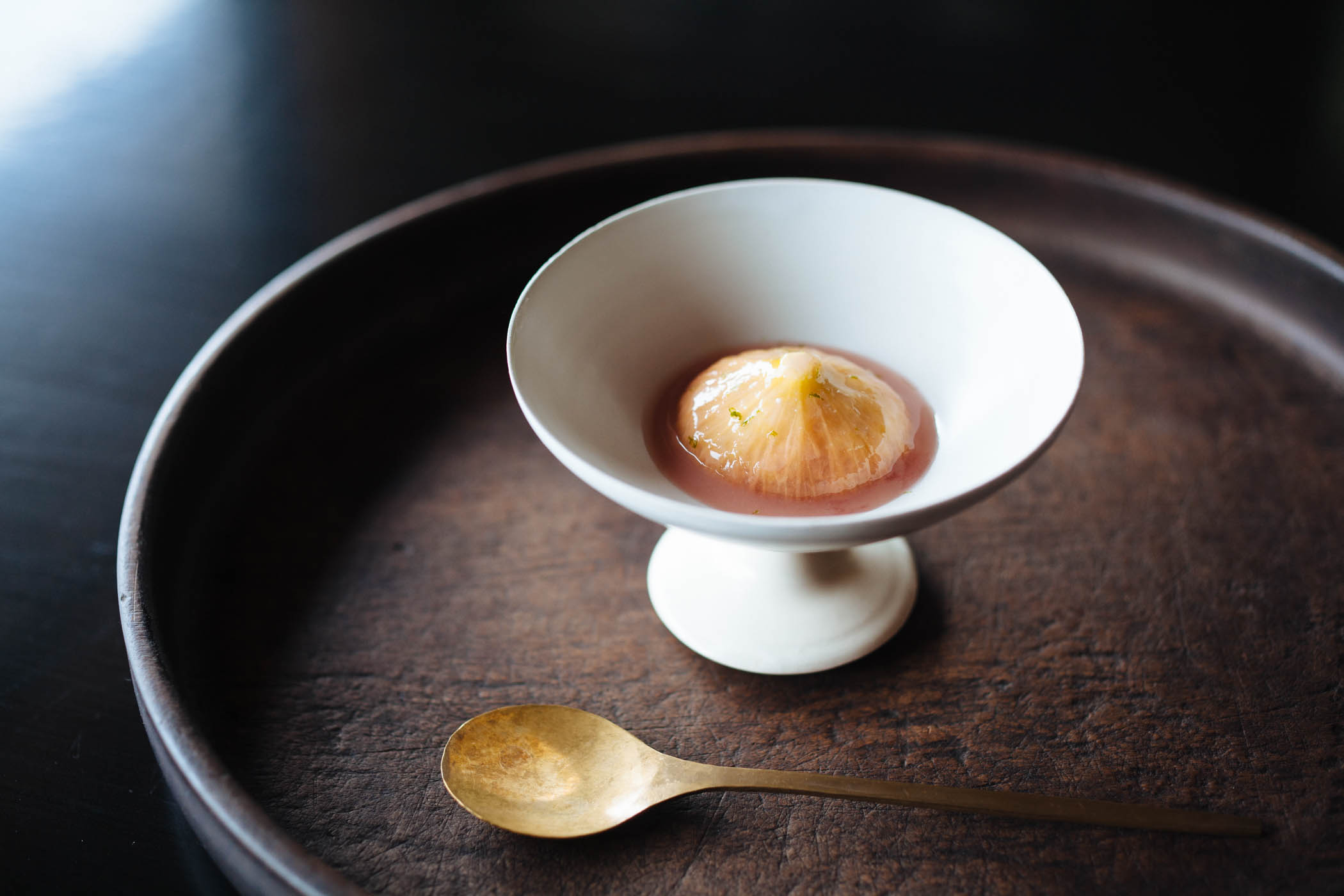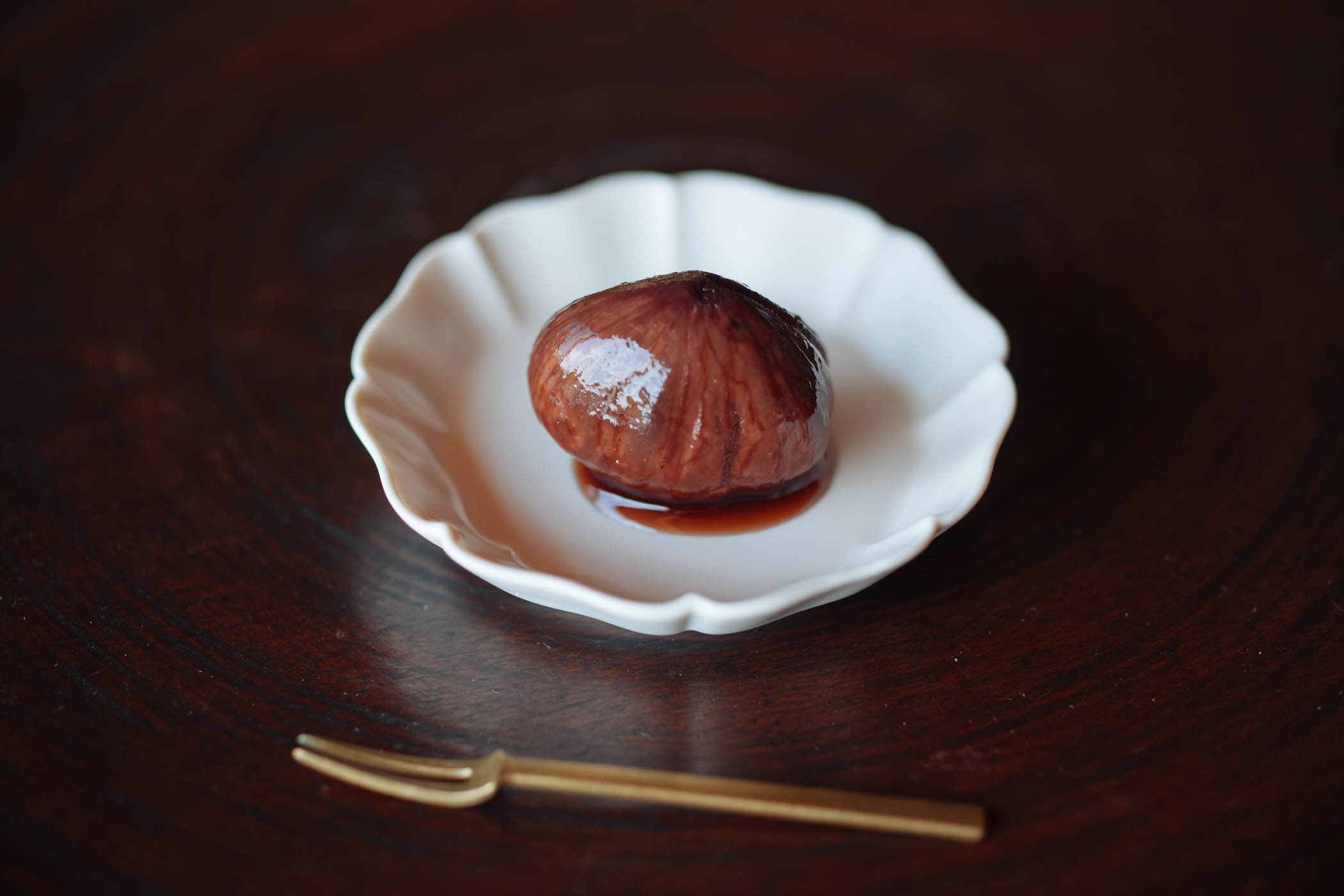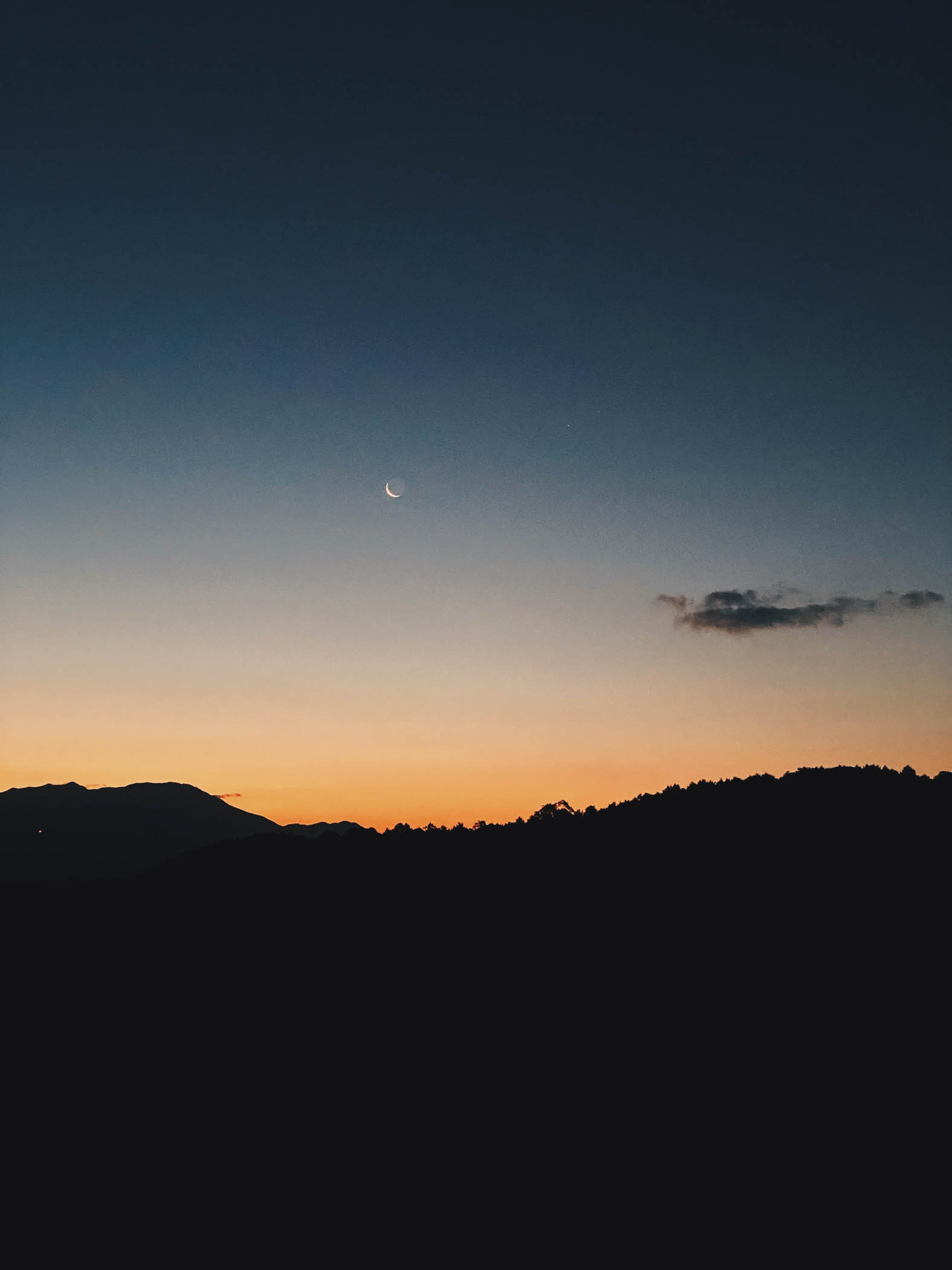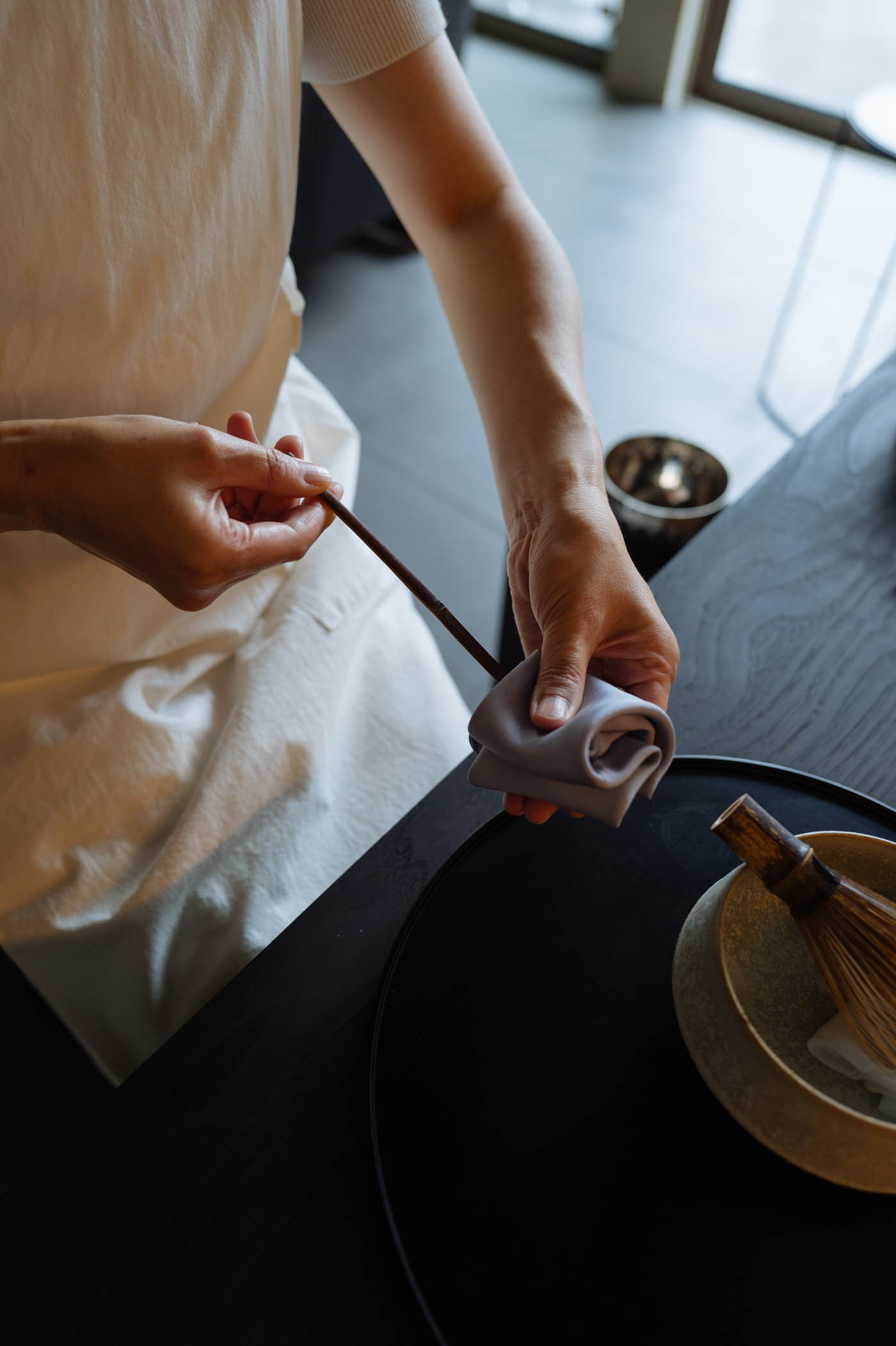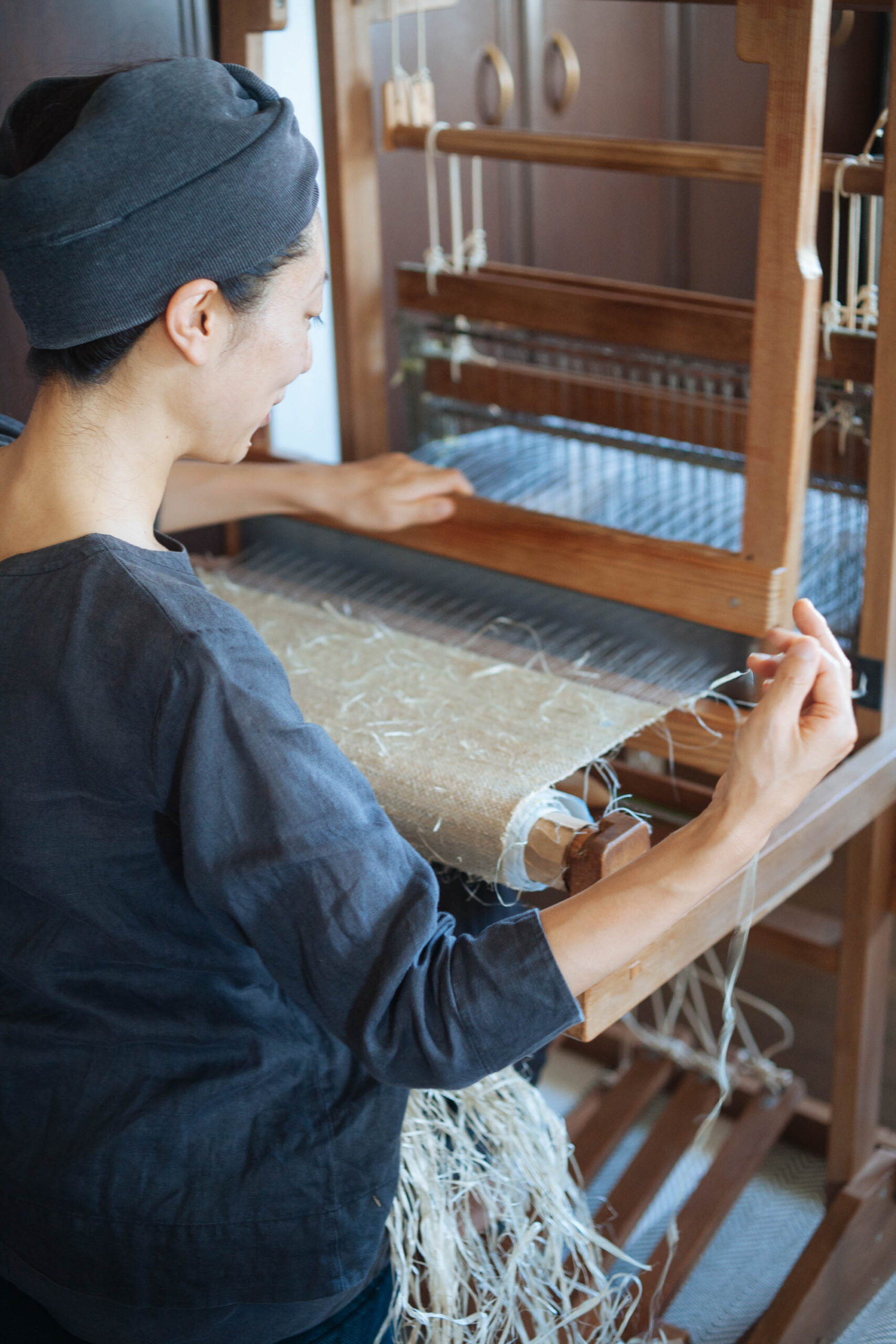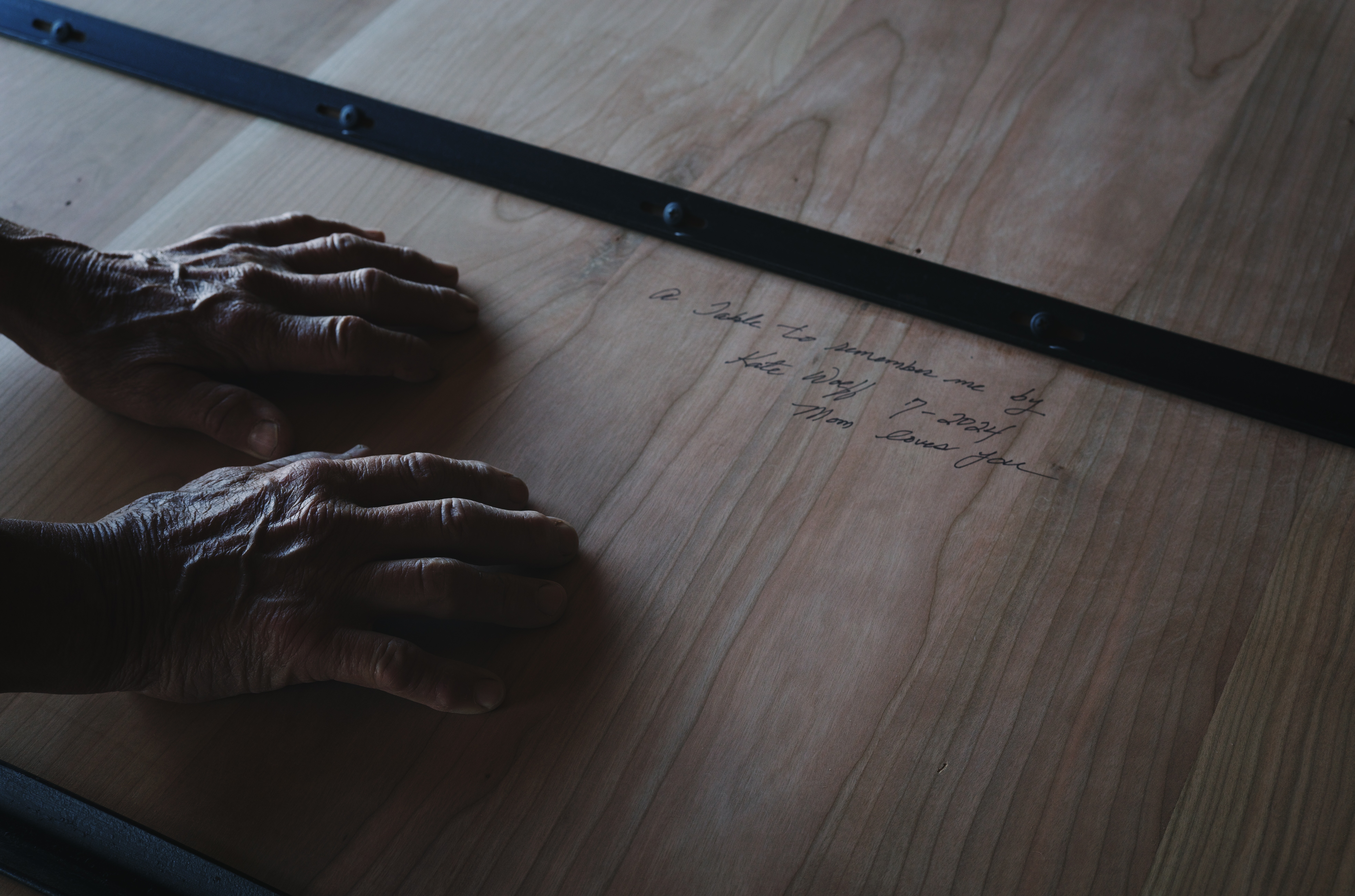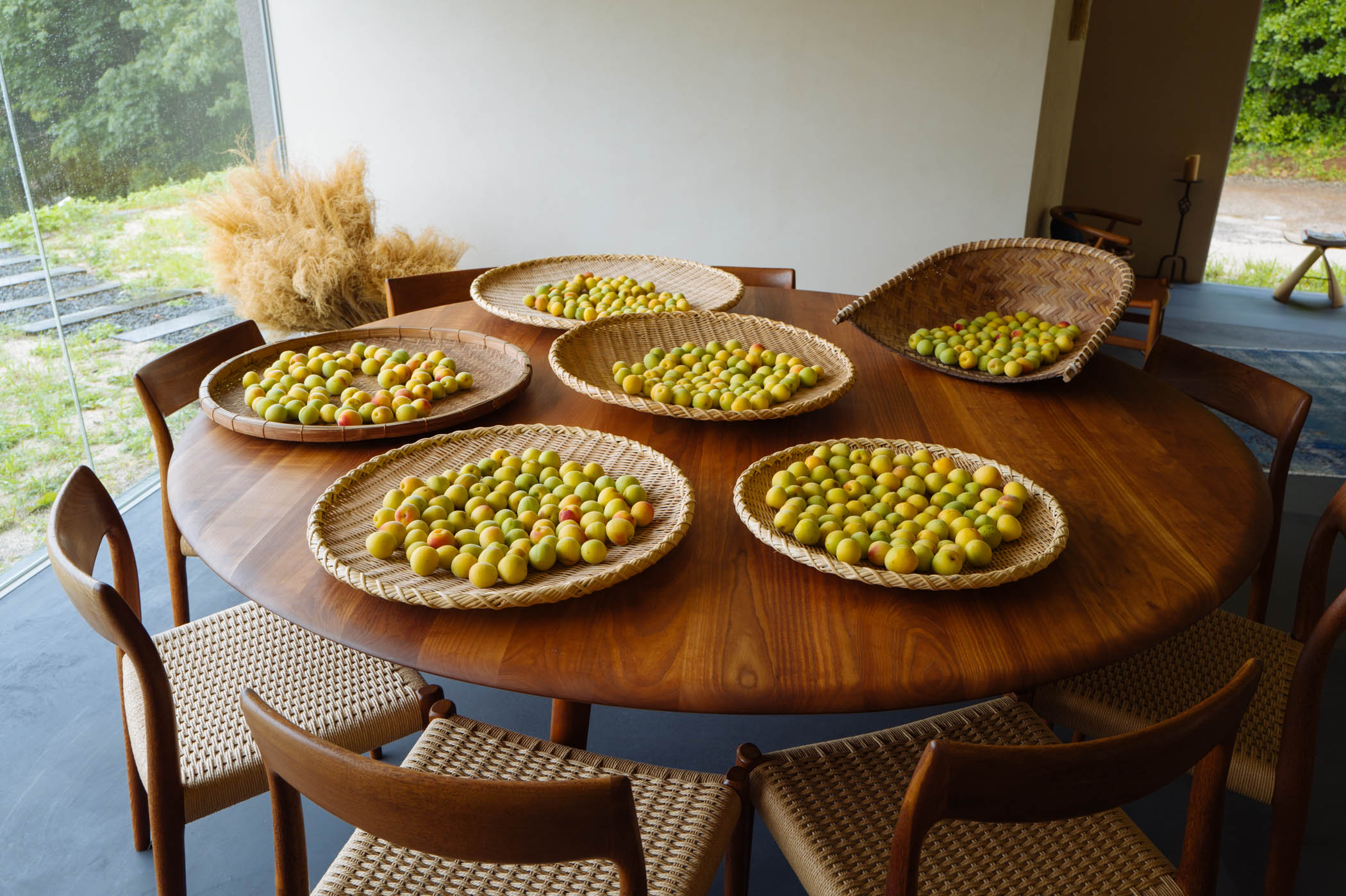On the autumnal equinox, a full harvest moon rises due east outside my window. She casts her wise, benevolent light far and wide, wrapping everything in a warm, shadow-laden glow. With her arrival comes a stretch of fair fall weather, brisk mornings and crisp evenings bookending golden afternoons beneath high-ceilinged skies.
Here in Mirukashi, the weather designs my days. At dawn, I rise with the sun and watch the light unfurl. I glance through the picture window, scanning from near to far, reading the day’s intentions. Glowing foliage and faint outlines of distant mountains, blurred into a gray sky like water-stained fabric, herald a slow, interior day. Flat green leaves beneath a bright blue sky, the distant mountains rippled like low-tide sand, suggest a few good hours outside, readying the land for winter.
Living this way, tethered to the elements, is my greatest luxury. I think of my visits to the depachika—the lower level of Japanese department stores—those windowless, fluorescent-lit expanses, overflowing with edible marvels, an ocean of seductive packaging. Strange and delightful, like an amusement park, but pure fantasy. An artificial bounty, offered under artificial light, far from the true rhythms of the day.
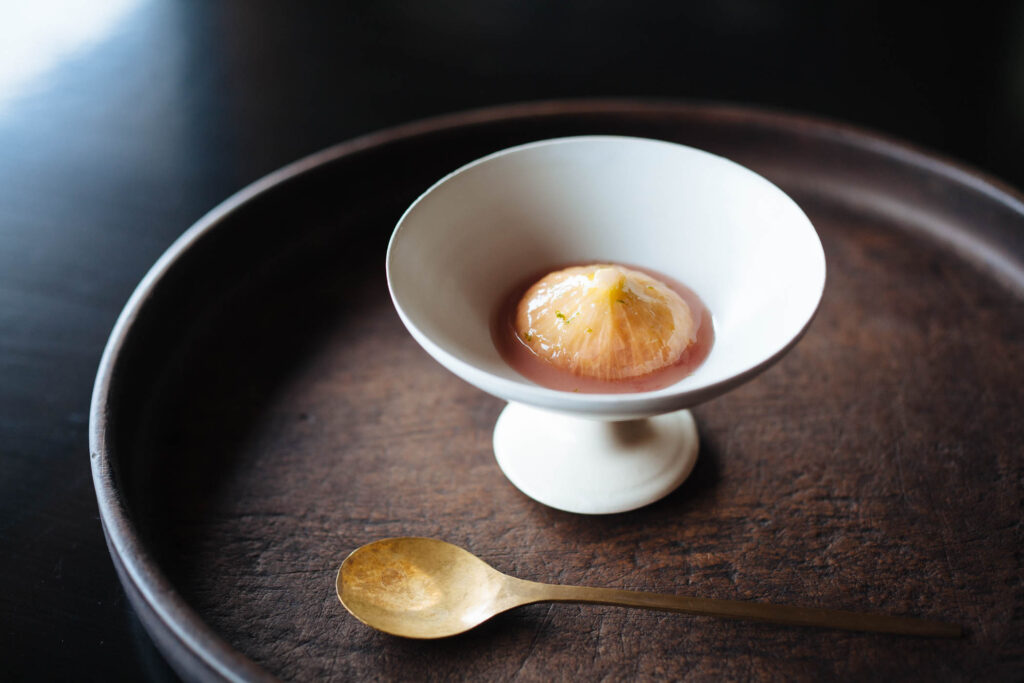
On cold autumn mornings, when dew settles thickly, I admire the pool of water resting on the lobate leaves of a young fig tree, glistening in the slant of early sunlight. The tree is still small, perhaps years from bearing fruit, but its sweetness will be all the richer for the long wait.
They say figs are the sweetest fruit, and perhaps it was the fig, not the apple, that tempted Eve. It was fig leaves, after all, she chose to cover herself. I too would be more tempted by a sultry fig, its thin, blackish-purple skin stretched taut over a teardrop sac of flowers, forever concealed.
How do you know when a fig is ripe? Pluck it too soon, and it will bleed milky tears. But when ready, it is voluptuous and yielding, bursting with crimson flesh and the crunch of countless tiny seeds.
Here, the fig season aligns with the autumn equinox. But in the wild, there is no true season for figs. Wasps hatch inside the ripe fruit, catch pollen as they burrow their way out, then fly astonishing distances to enter an unripe fig, pollinating it and creating a floral womb for their own eggs. A secret cycle, ancient and erotic.

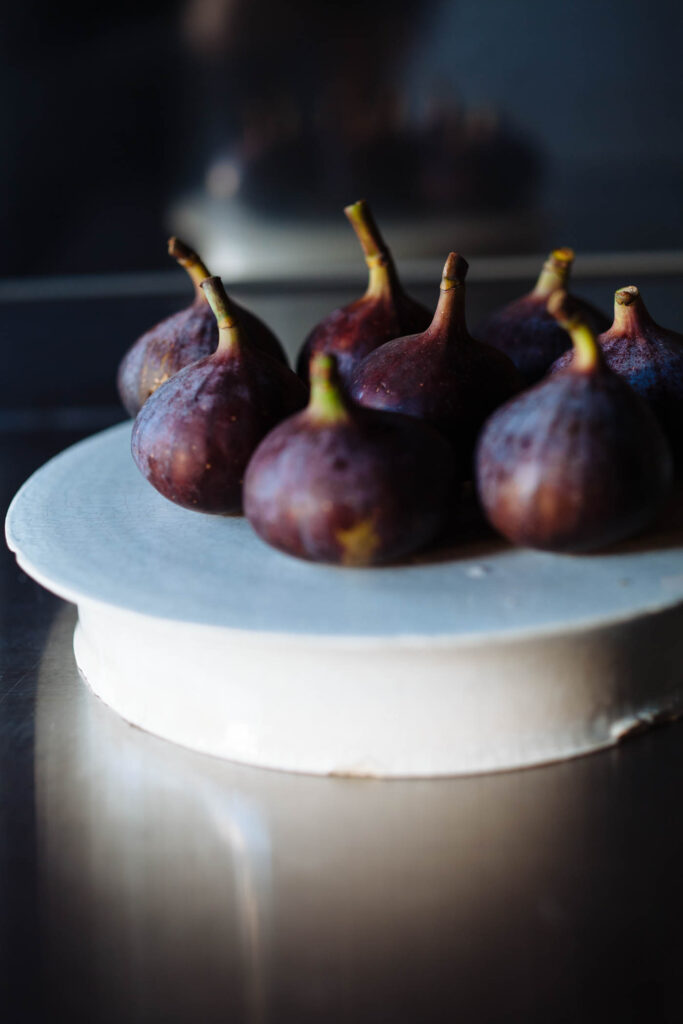
As the sun strengthens, it lifts the dew back into the sky. That ephemeral shimmer vanishes, no more than a memory.
Autumn burns like twilight. If the year were a single day, fall would be the blue hour, a dim, piercing clarity that reveals a startling beauty just before everything disappears into the dark. The sun carries its warmth further away each day, stretching the nights longer, thinning the light. This is the briefest and most precious of seasons, when we gorge on sweetness before the icy breath of winter arrives.
And so, I gorge on figs, gorgeous and plump, their purplish-black skin drawn tight over voluptuous flesh. Sliced open, they can make you blush. Figs are the sirens of the fruit world, mysterious, seductive, impossible to resist. They’re best when so ripe and tender, you fear they might bruise from your gaze alone.
In Japan, they are often peeled and eaten raw, divine in its simplicity. But as the wind grows colder and evenings deepen, I find myself at the stove, stewing them in savory-sweet white miso and the tart juice of aoyuzu—unripe yuzu—plucked from a tree in my orchard.
On the cusp of the equinox, the sun sets sooner than expected. Warm days surrender to cool nights, and stewed figs usher us gently into the season of darker flavors.
